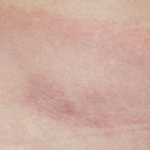Dr. Steere eventually identified 39 children with the disorder in the community and realized that although their illness superficially resembled juvenile rheumatoid arthritis, there were critical differences. Many of the families Dr. Steere interviewed remembered their child coming down with a flu-like illness and an unusual expanding rash before experiencing joint swelling. Carefully tracking the onset of symptoms made it clear that most of the children first became ill during the summer or early fall, suggesting an infection as the trigger rather than an immune system disorder.
Dr. Steere published his findings in the journal Arthritis & Rheumatism in 1977 in an article titled, “An epidemic of oligoarticular arthritis in children and adults in three Connecticut communities.”
By the time I arrived at Yale in 1984, this much was known about Lyme disease: The infection is caused by the bacteria Borrelia burgdorferi and spread primarily by the Ixodes dammini tick. The characteristic rash, erythema chronicum migrans (ECM), occurs in about 50% of patients between three and 14 days after the initial tick bite and represents the leading edge of the infection. The bacteria, in the same spirochete family as syphilis, can be successfully treated with antibiotics. In untreated patients, the infection may disseminate, leading to heart rhythm abnormalities, recurrent joint swelling, and a variety of central nervous system and peripheral nerve disorders.
But beyond these basic shared truths, nearly everything else about Lyme disease has proven contentious. Does a positive Lyme test correctly identify those with the disease? Is a negative test sufficient to rule out the disease? Do early antibiotics prevent later manifestations of Lyme disease? If so, in 99% of cases? In 50%? How do physicians treat a patient who clearly has Lyme disease, is treated with standard doses of antibiotics, but fails to fully recover?
My Exam
Returning to Ms. Corinth’s room, I decided to examine the affected knee last. Instead, I began with the hands and assessed each individual joint for signs of swelling or limited motion. These were unremarkable. But as I was about to go on, I noticed that even through the thin layer of cream-colored nail polish, one fingernail was clearly abnormal. I asked her if she’d noticed the tiny pits in the nail before.
“Sure. That’s why I usually put an extra coating of polish on that particular finger, to hide the dimples. I hate it,” she said emphatically.
“Any other problems with the nails?” I asked.


